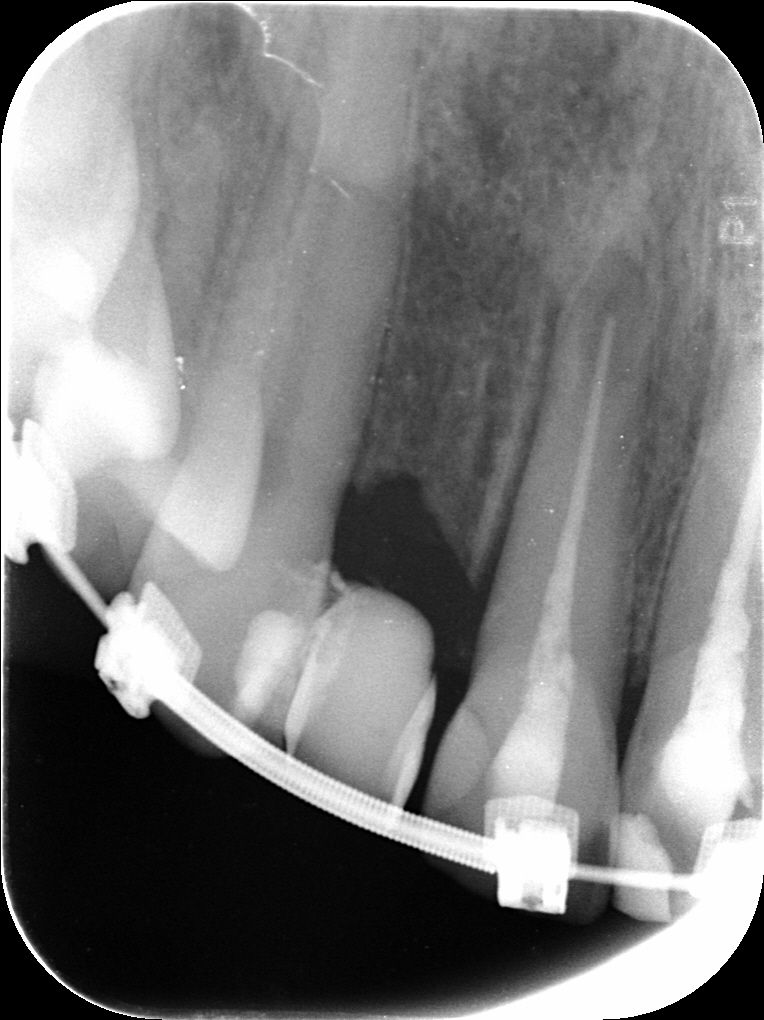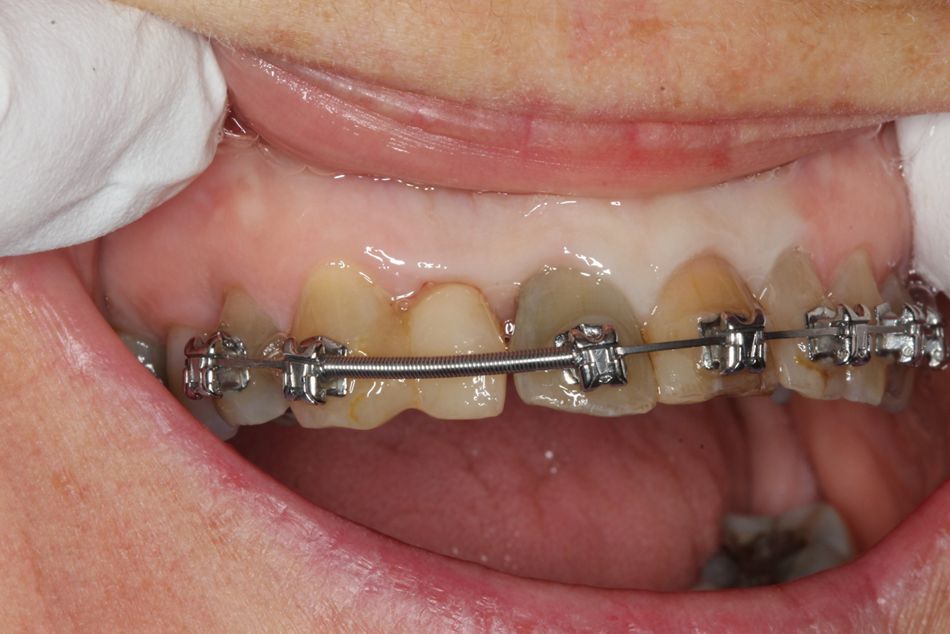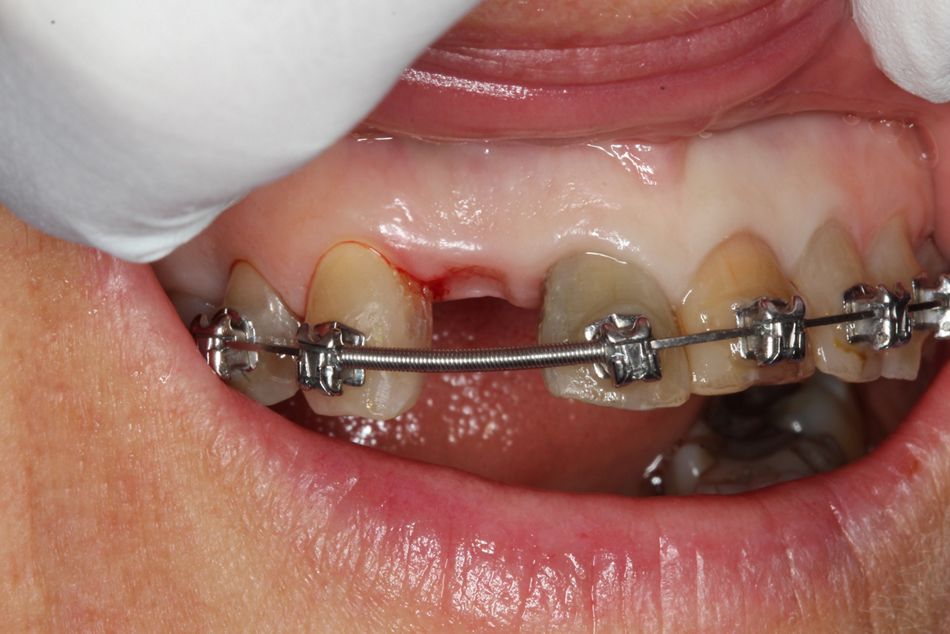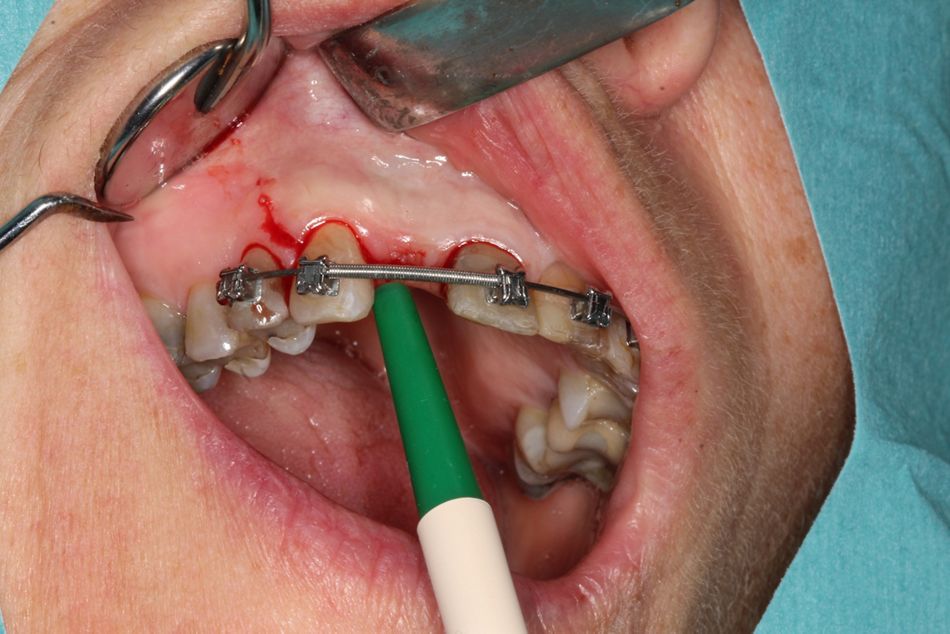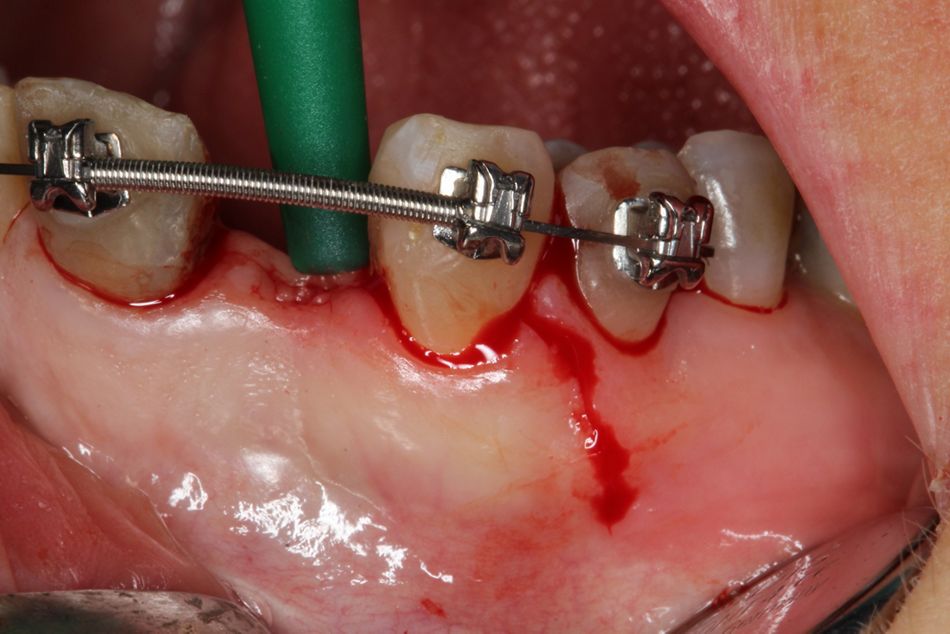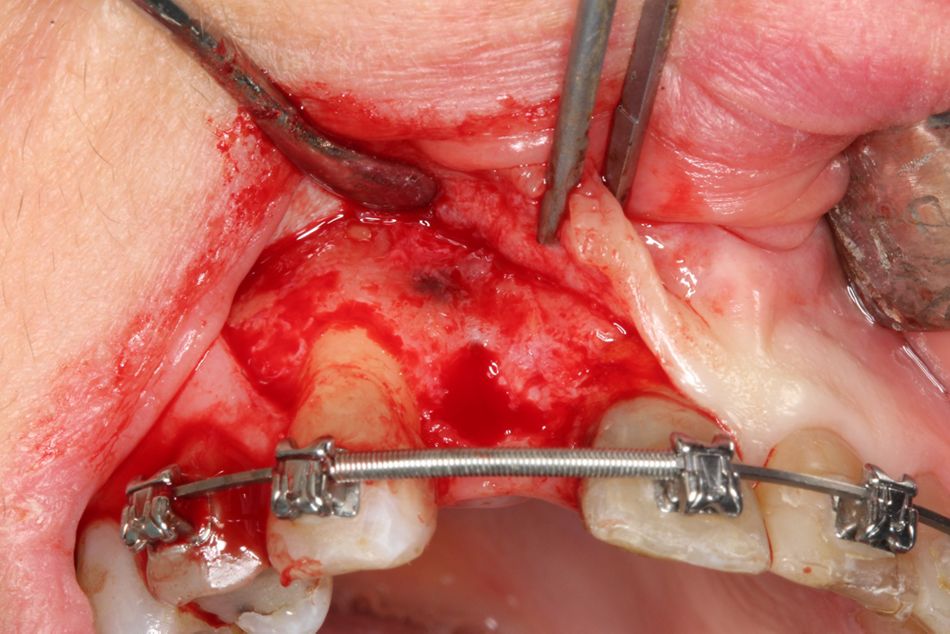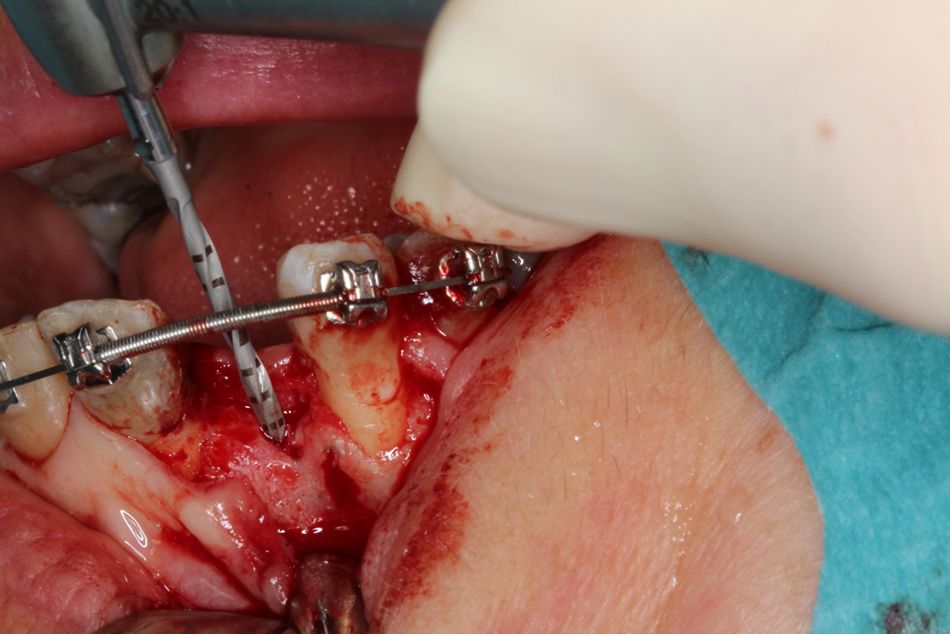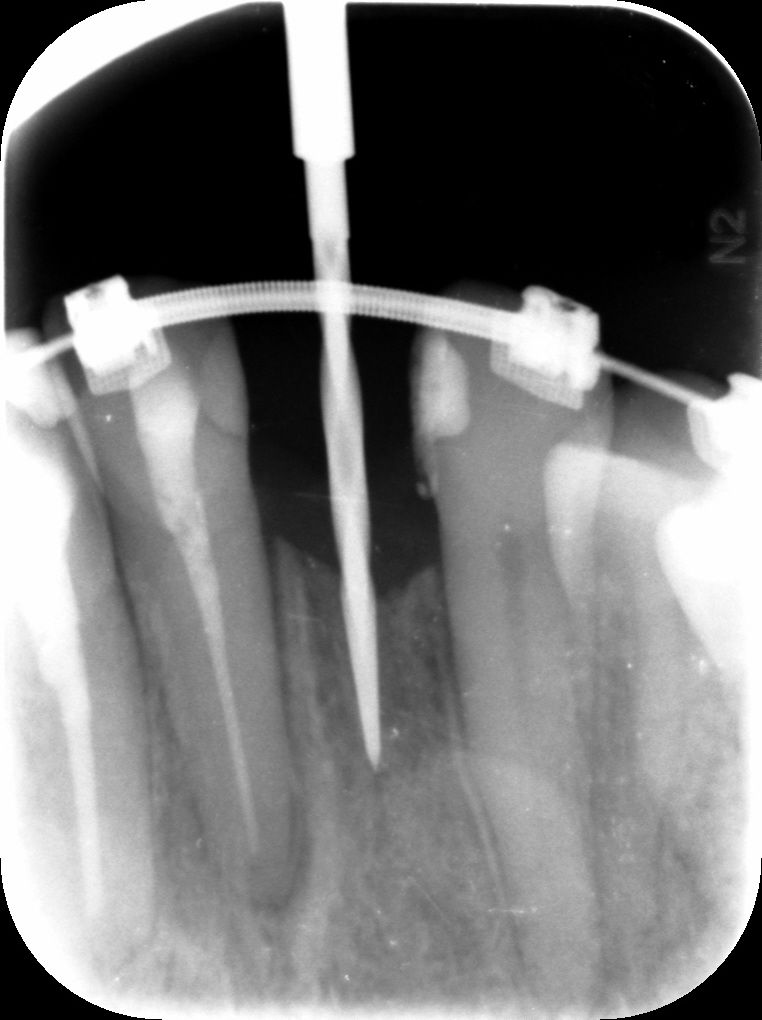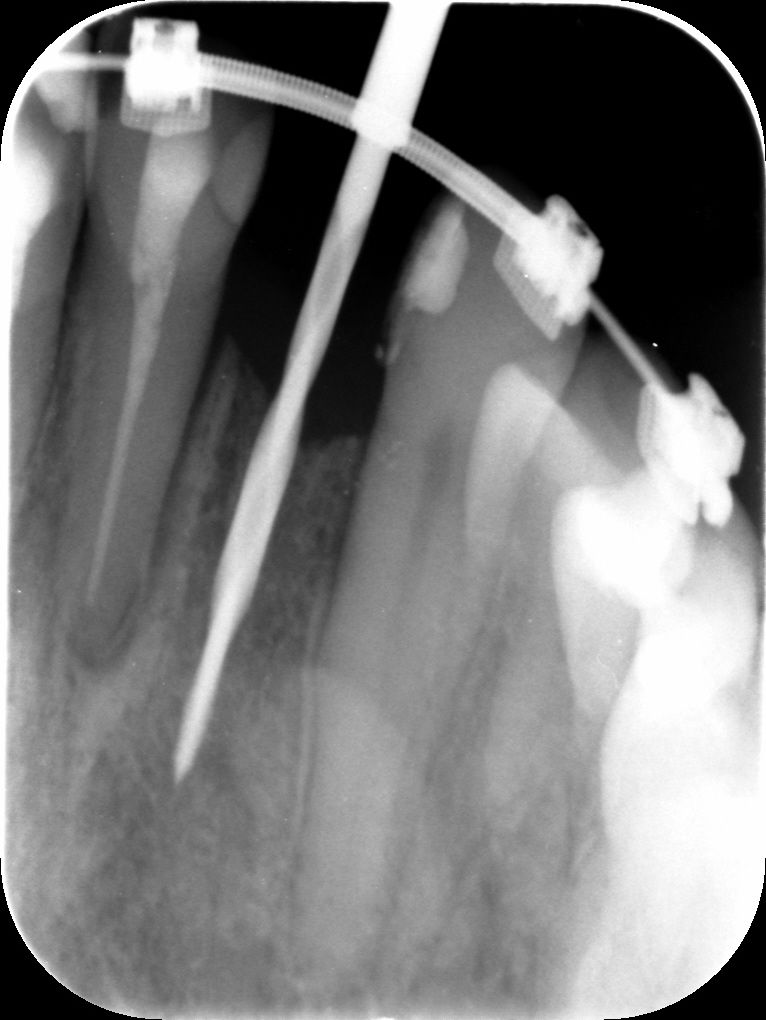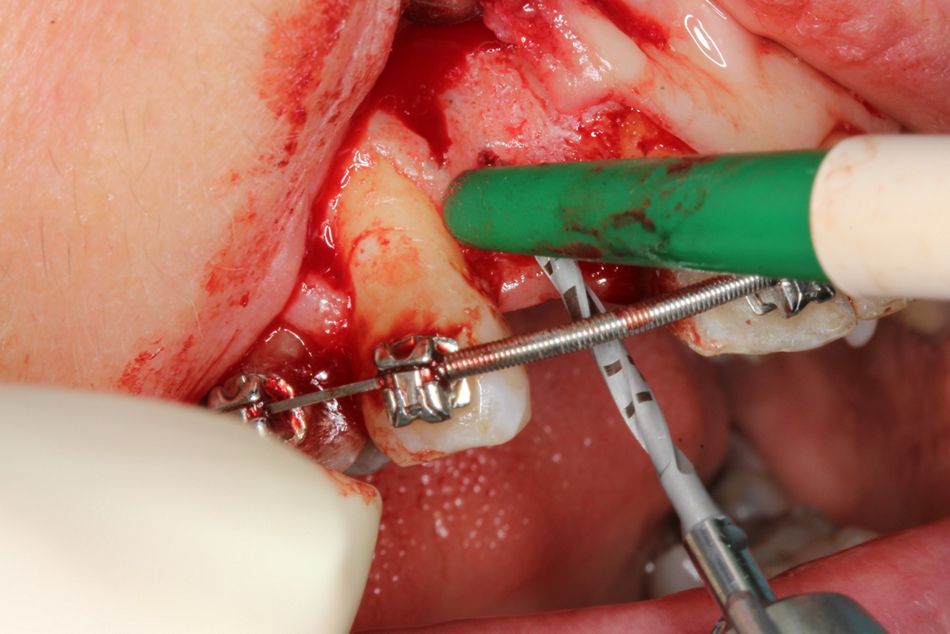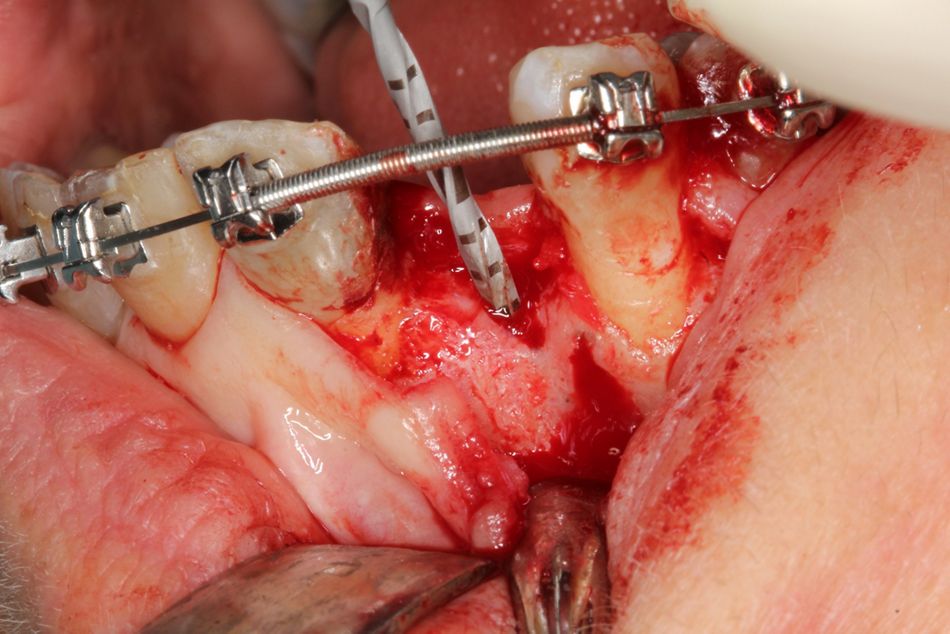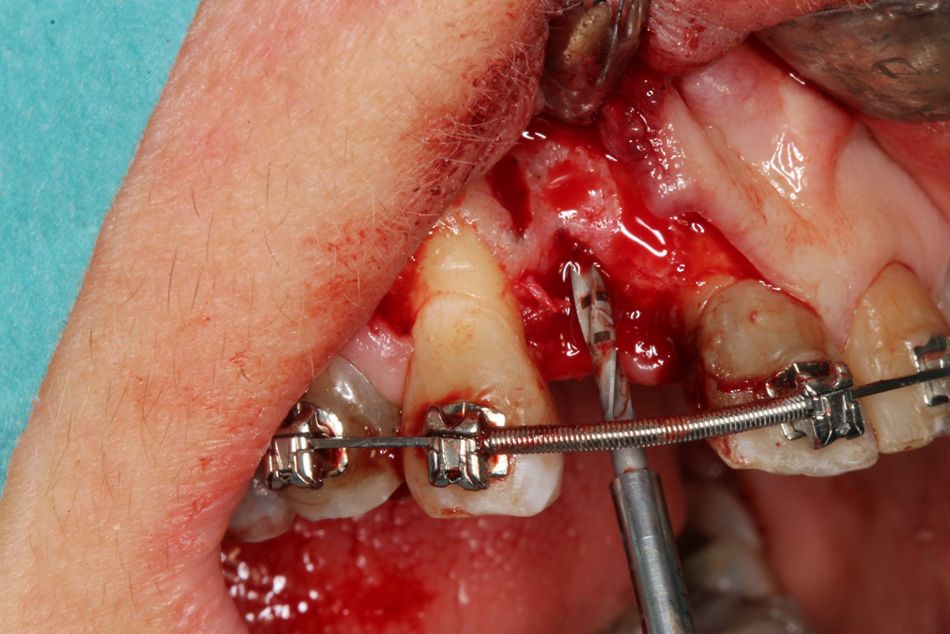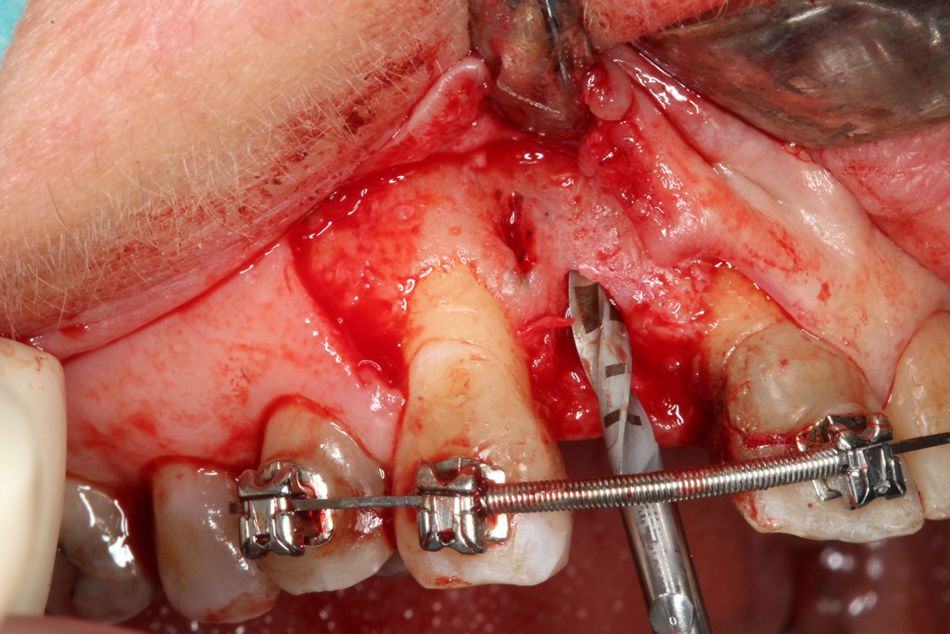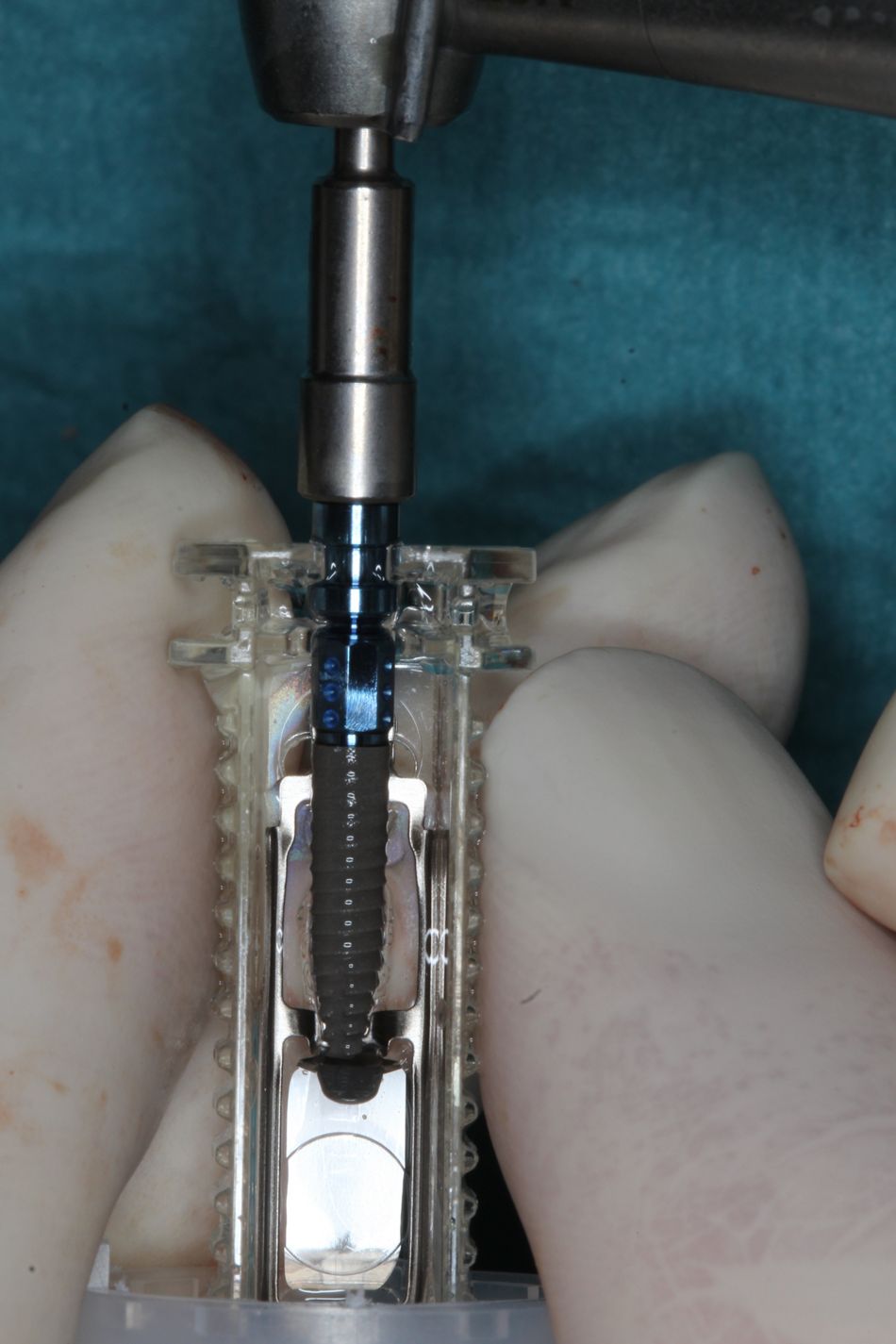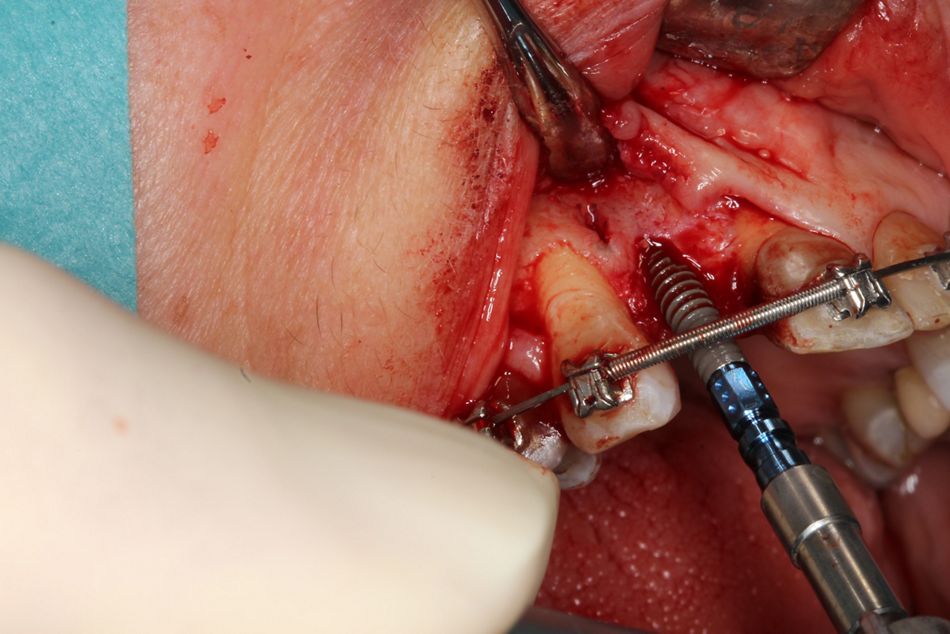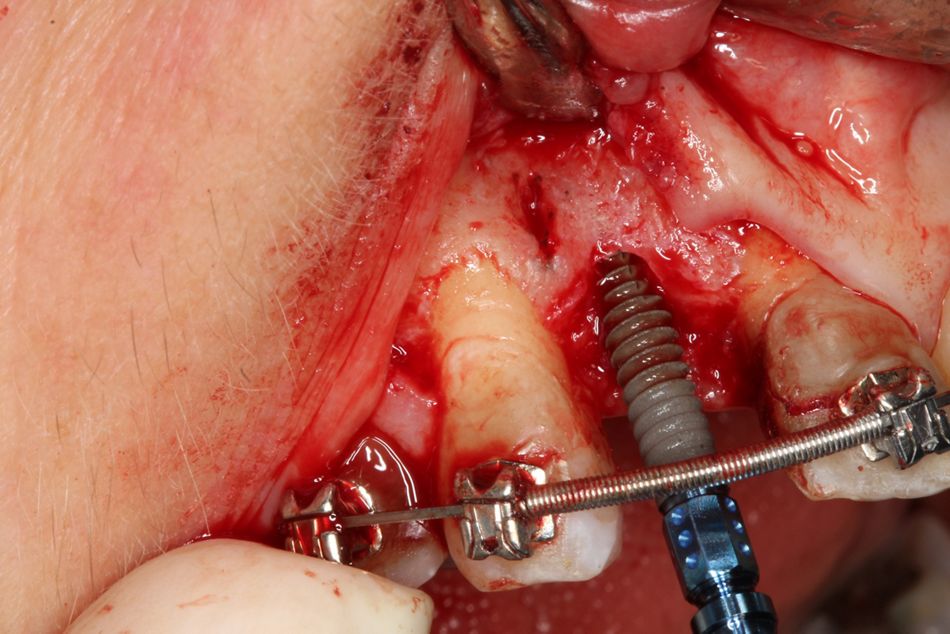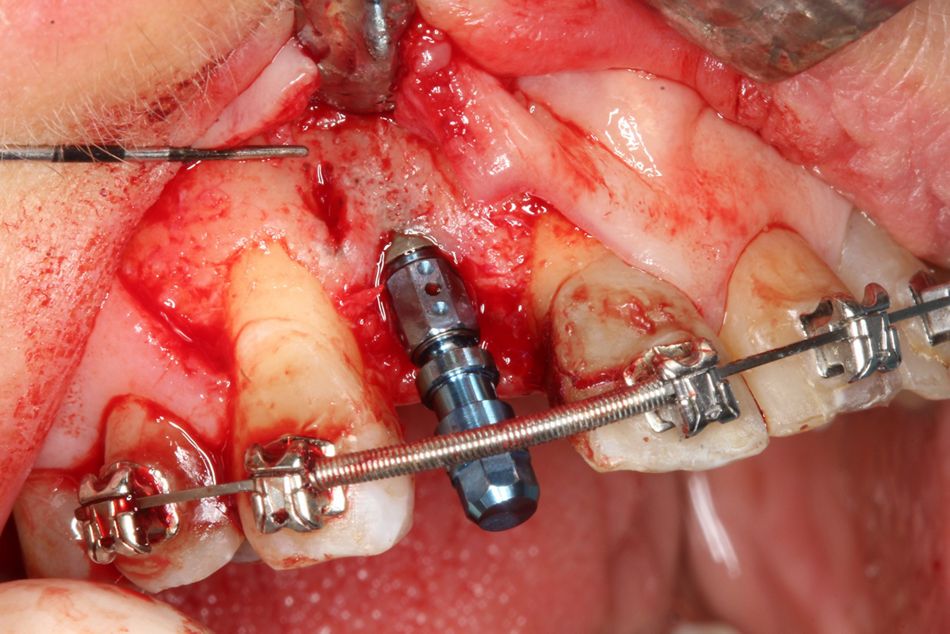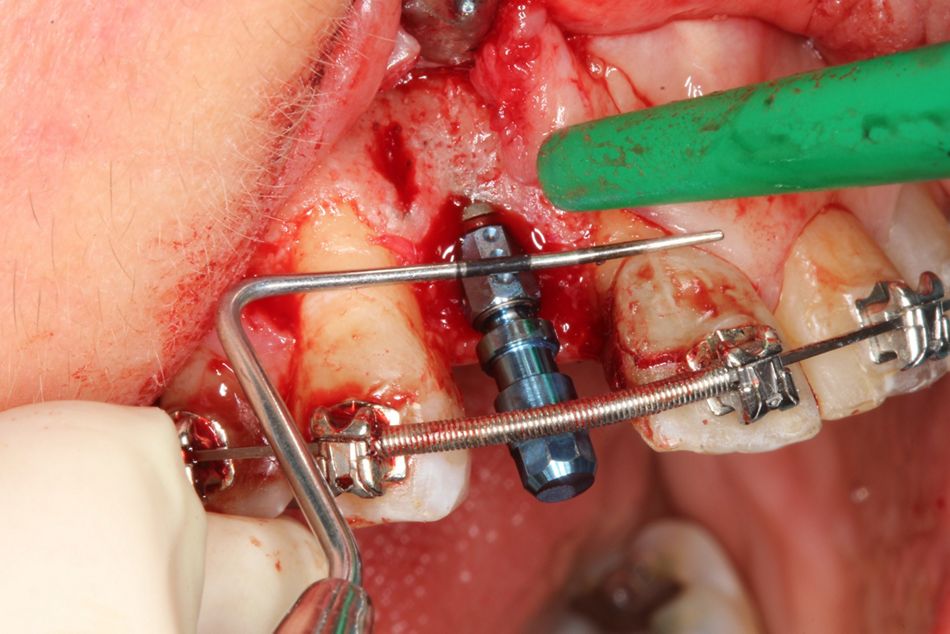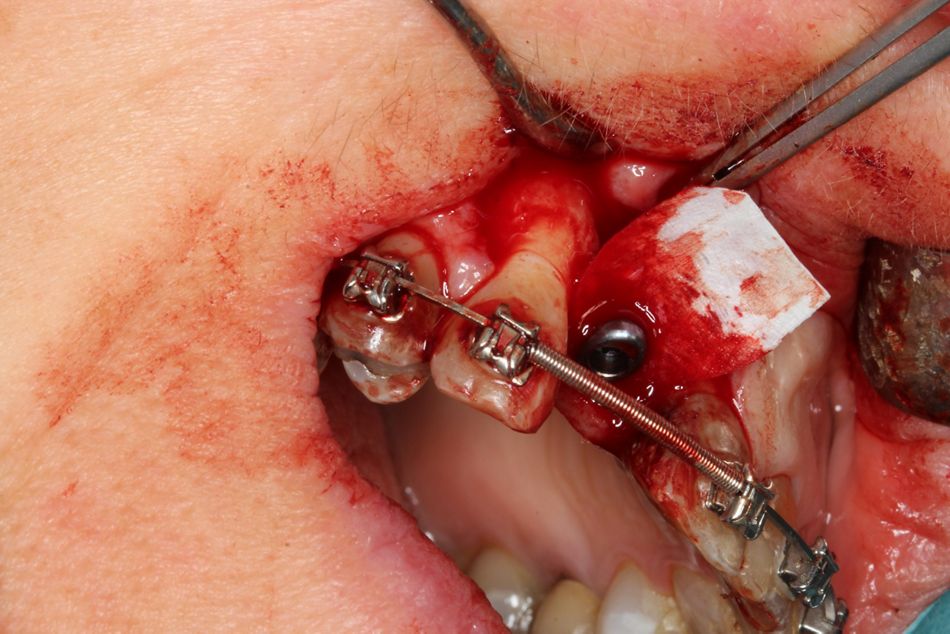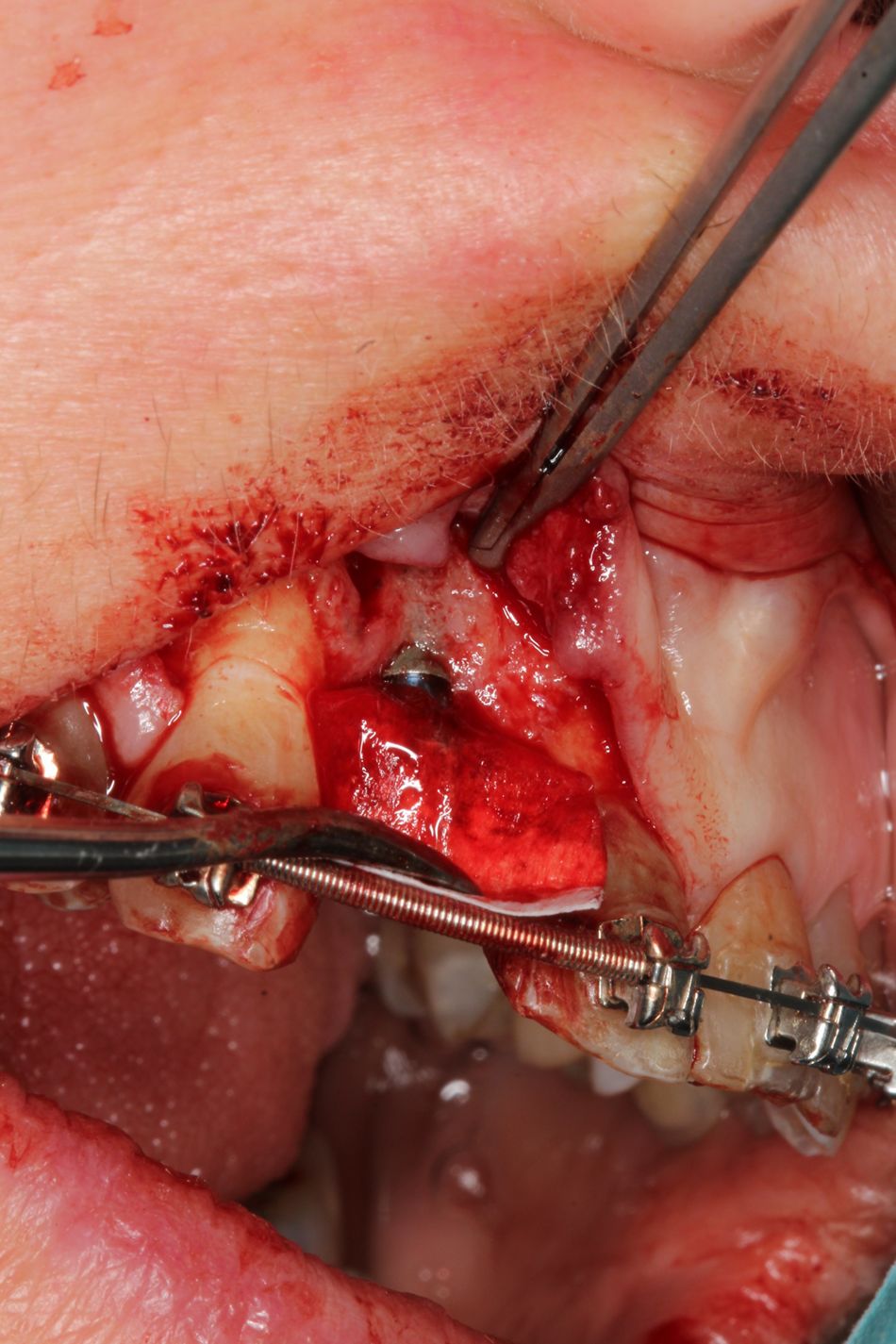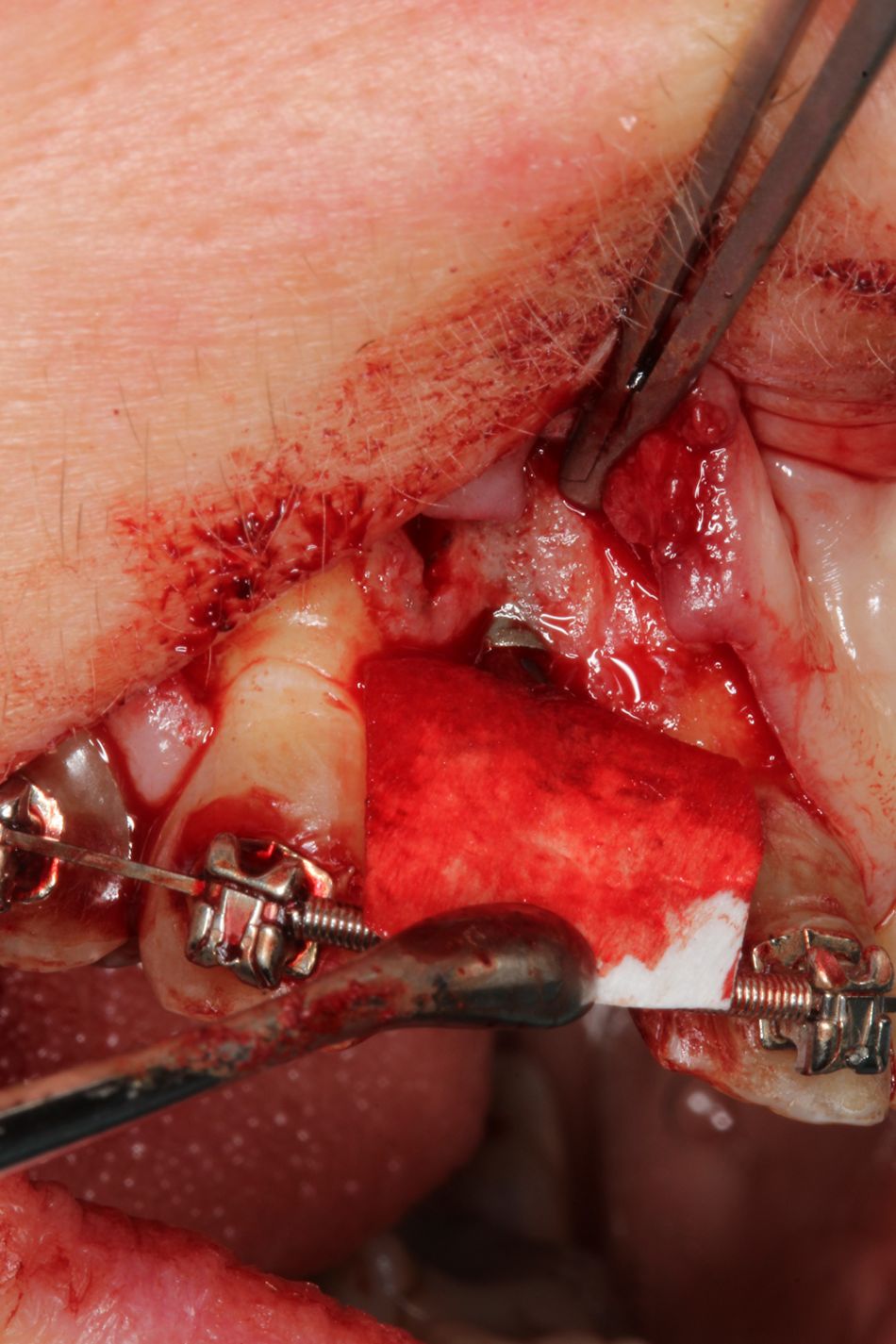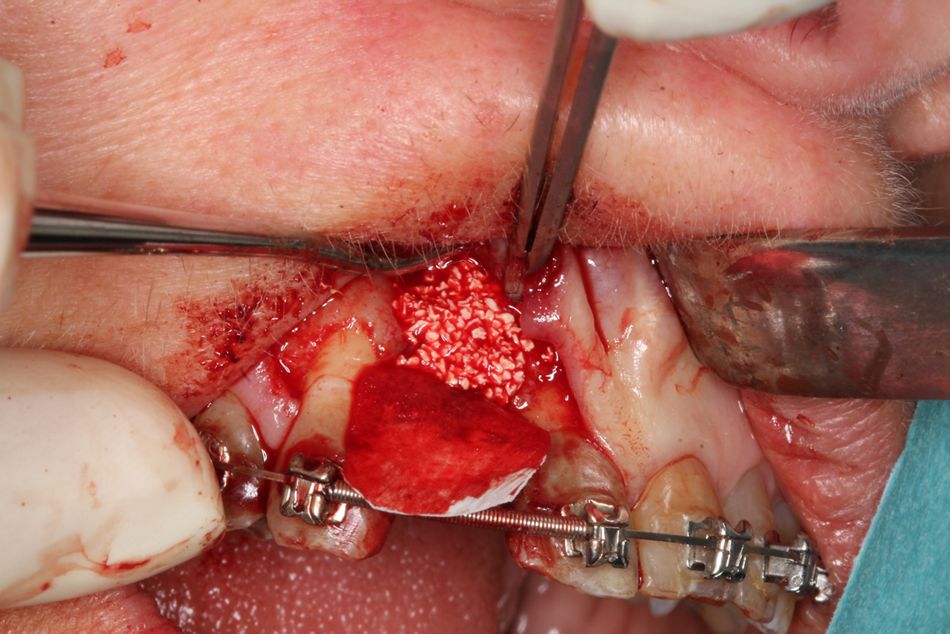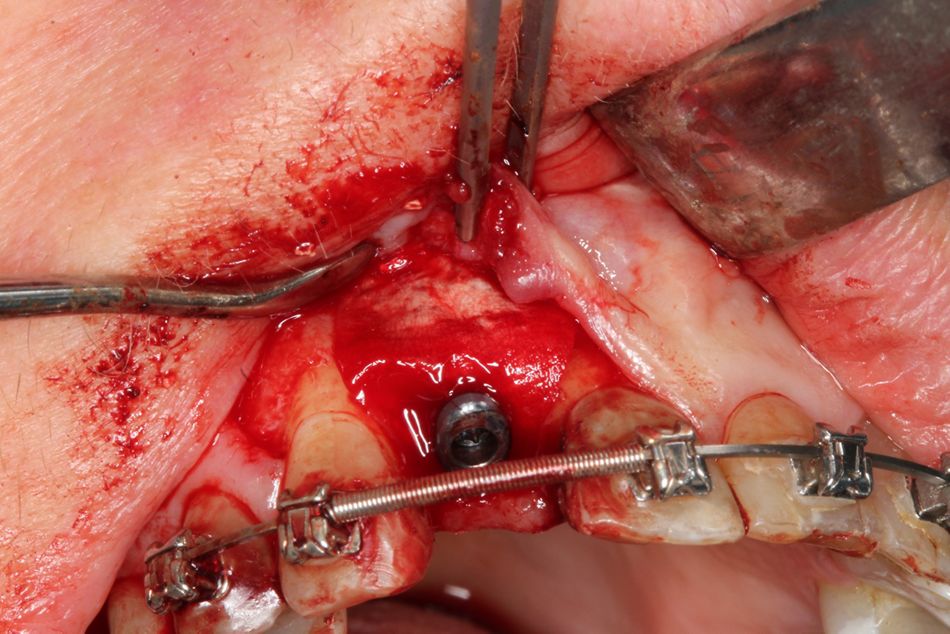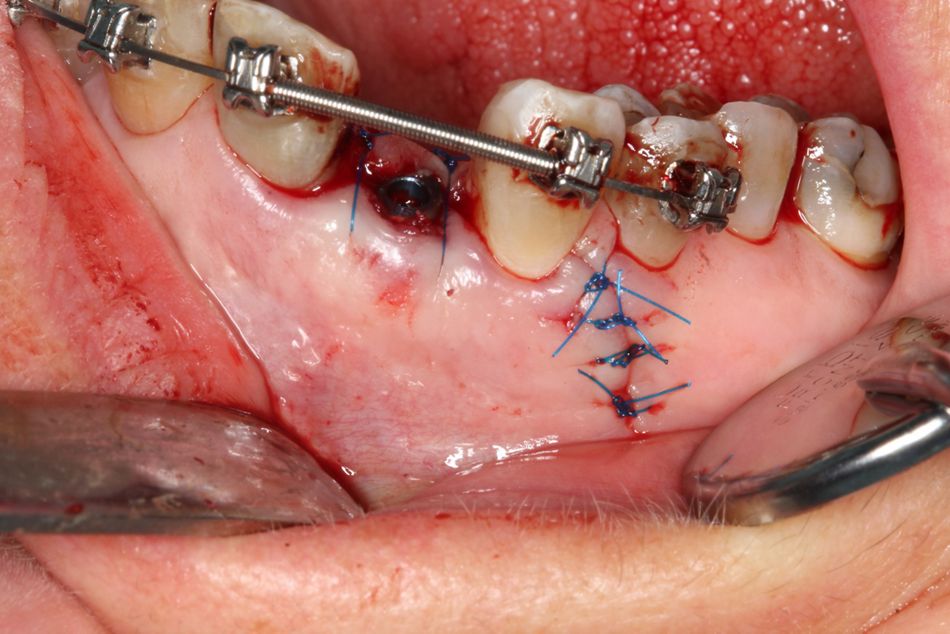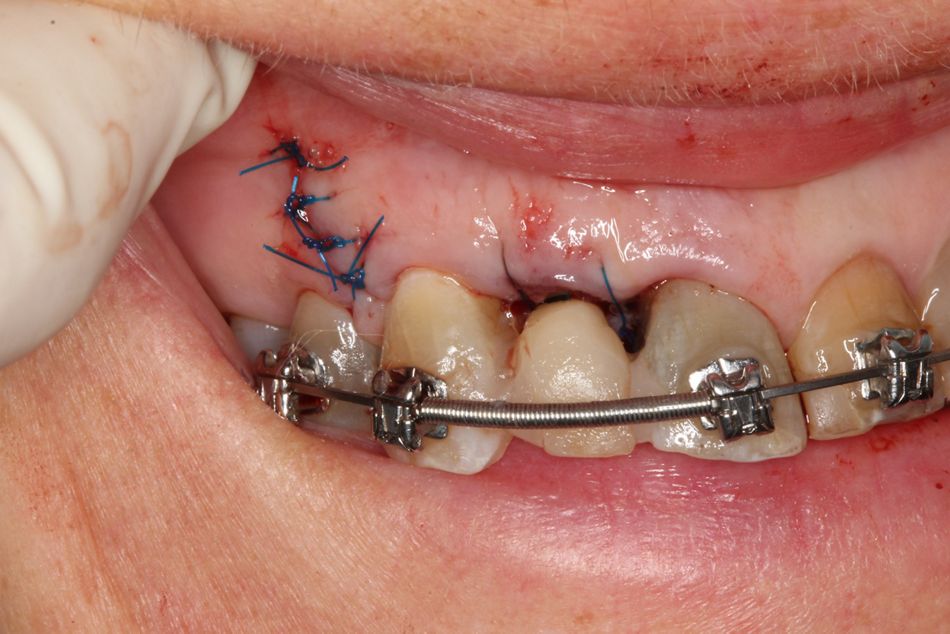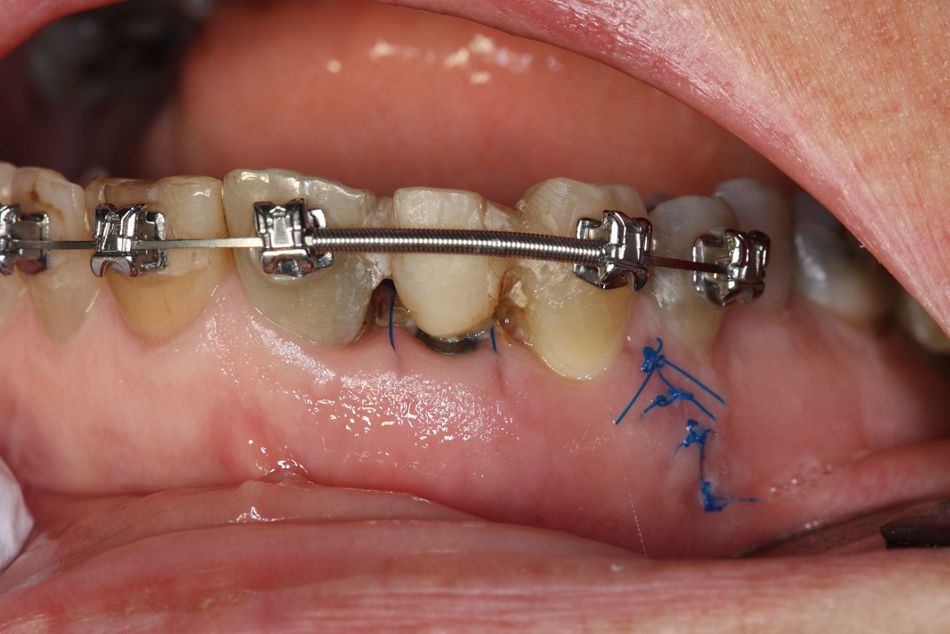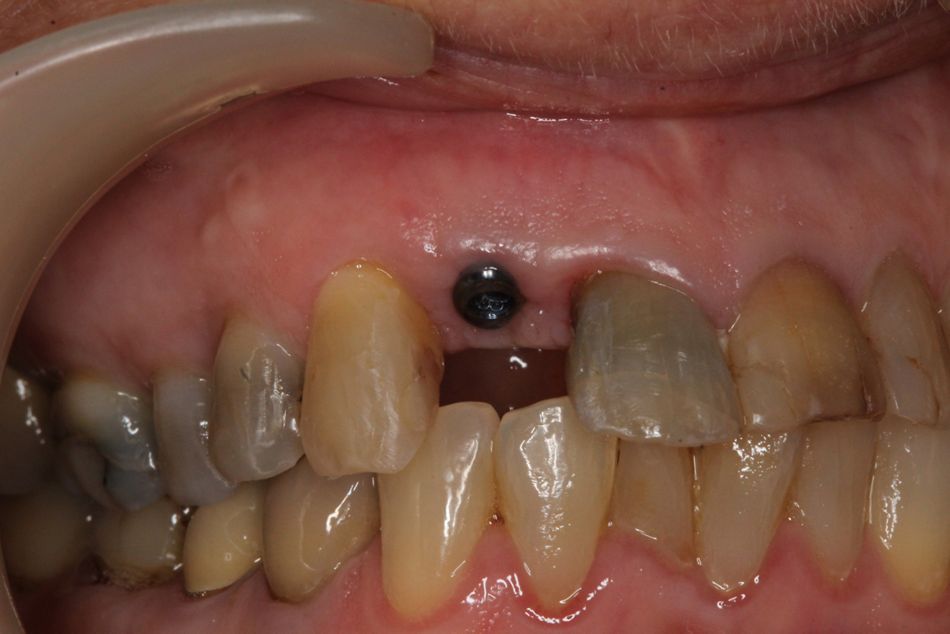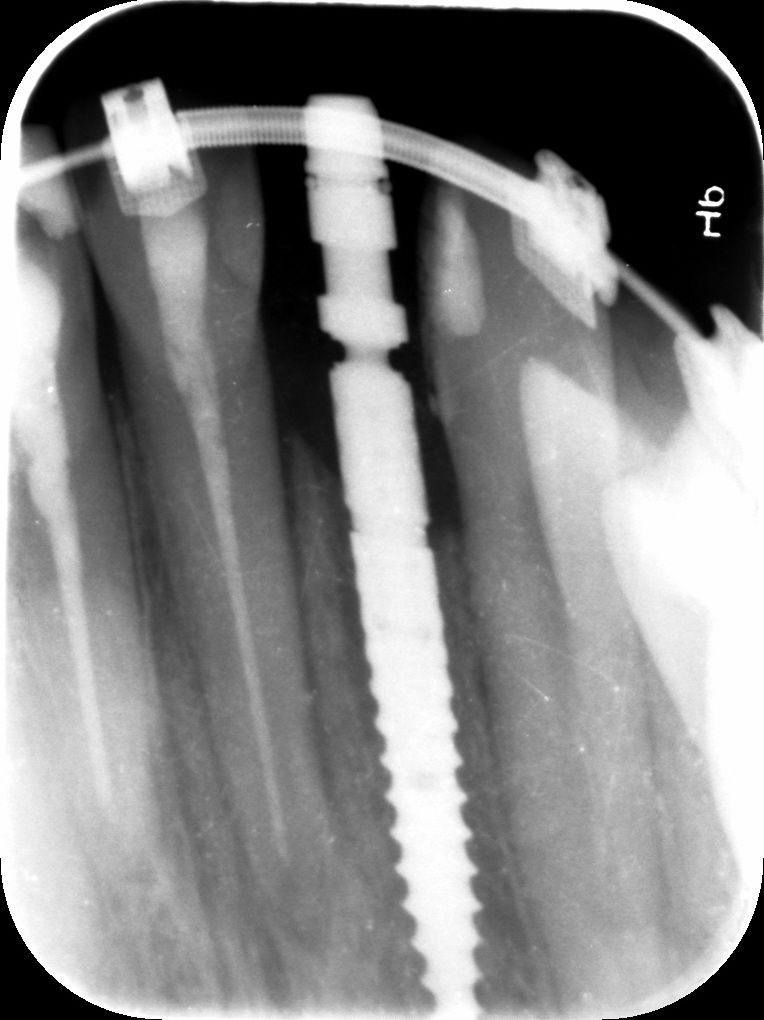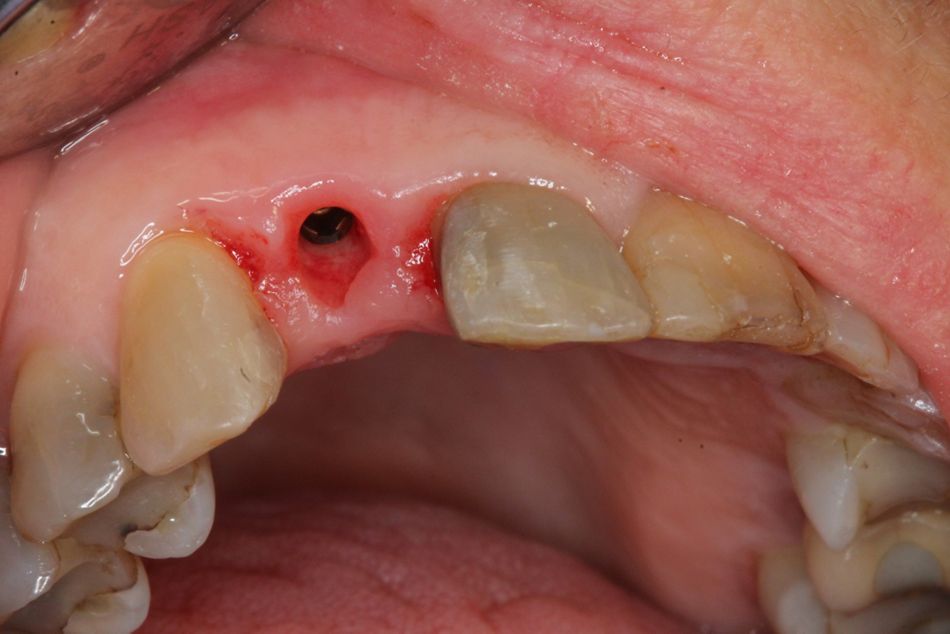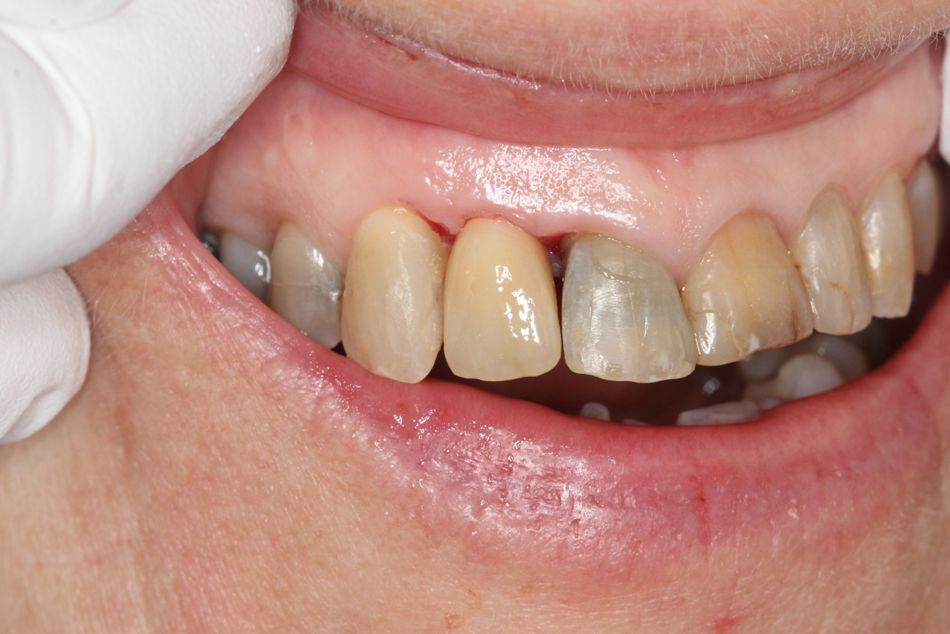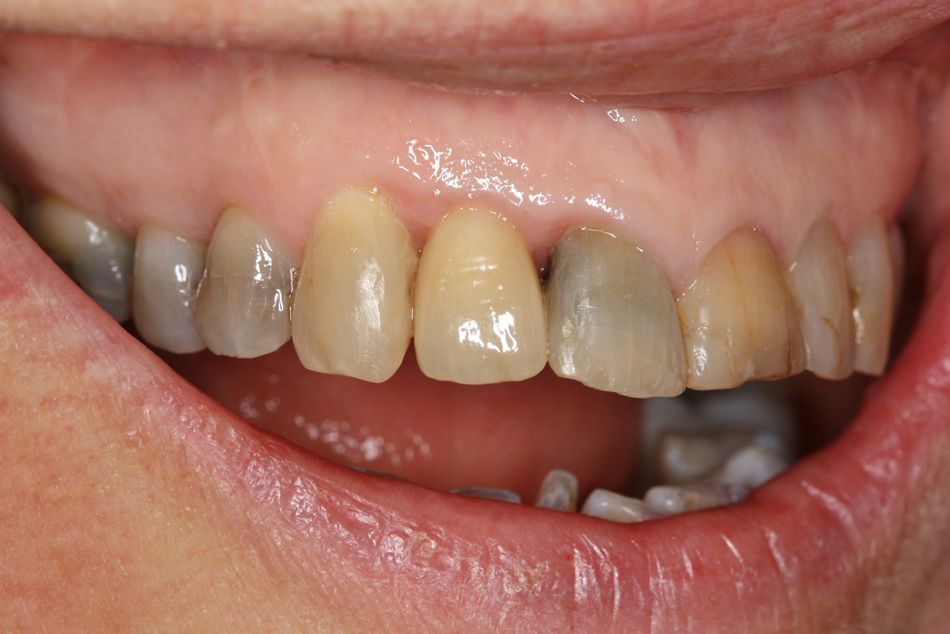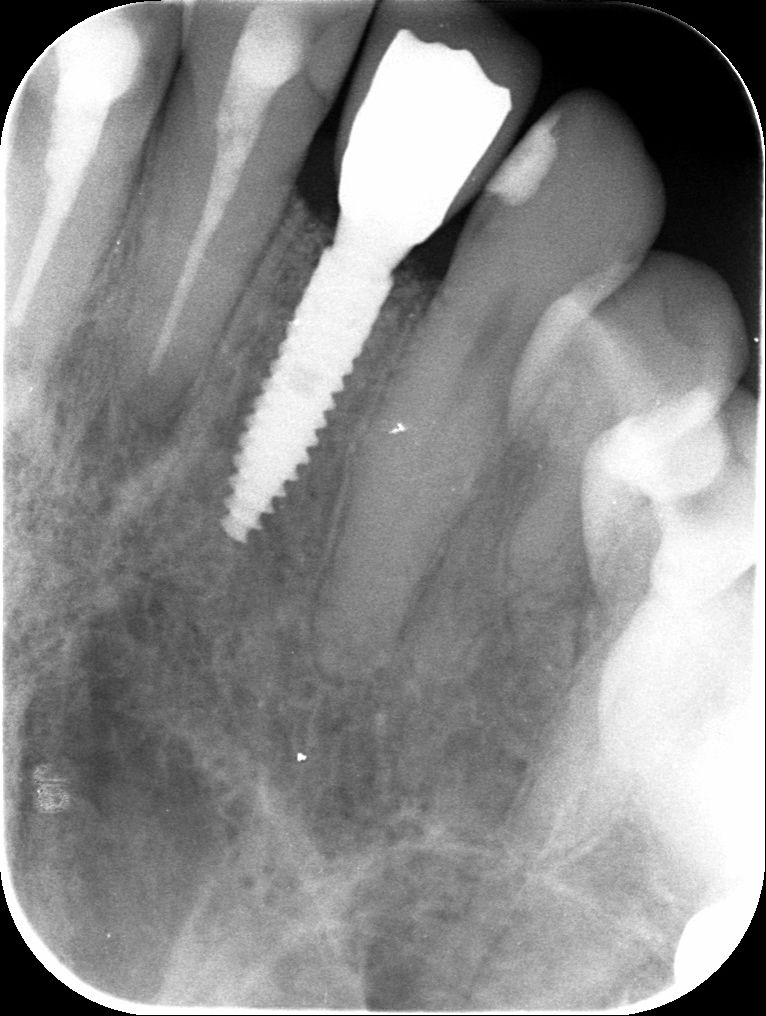This case report describes the application of the Straumann® BLT Ø 2.9 mm implant in a narrow interdental space. It can be concluded that Straumann® BLT Ø 2.9 mm Bone Level Tapered (BLT) implants represent a safe and reliable solution for both narrow interdental spaces and narrow ridges.
Initial situation
The patient, a healthy non-smoking 55-year-old female, presented at my practice after losing her tooth #12 due to chronic apical infection. On clinical examination we observed very limited space in the region 12 (Figs. 1,2). The patient also suffered from a TMJ condition with wear facets and daily headaches.
Treatment planning
The patient wanted to restore her smile and function. The first priority, therefore, was to define a stable occlusion and then to provide orthodontic treatment to restore the occlusion and widen the interdental space for the placement of an implant in region 12. The occlusal dysfunction was treated with splint therapy until a centric relation was achieved. The orthodontic treatment was undertaken to establish stable occlusion and widen the interdental space in region 12. We subsequently planned to place a small diameter implant in region 12 followed by a single crown restoration.
Surgical procedure

